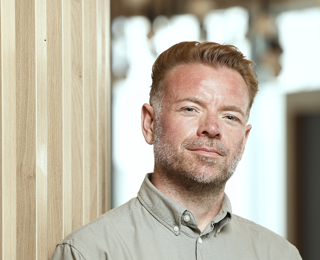
Proposals for Trecwn Green Energy Hub reach next milestone
Statkraft's first green hydrogen project in the UK has moved forward, with changes to the proposal following feedback from local communities, stakeholders, and the wider public
Statkraft, Europe’s largest renewable power generator, has announced that its first green hydrogen project in the UK has moved forward, with changes to the proposal following feedback from local communities, stakeholders, and the wider public.
Early engagement with local communities held in October and November 2022 has influenced plans for Trecwn Green Energy Hub in Pembrokeshire. These are reflected in the Environmental Impact Assessment Scoping Report that has now been submitted to Planning and Environment Wales
As a direct result of the feedback received from local people, Statkraft’s project team is now considering two options for the site of the green hydrogen production facility within the former Royal Navy Armaments Depot and has made changes to the project boundary for the solar farm.

The first option for the Trecwn Green Energy Hub, which was presented during the early engagement, was chosen for accessibility reasons, in particular the distribution of hydrogen for transport and industrial use.
The second option, which has been included in the Scoping Report, moves components further away from residential properties and has advantages in terms of proximity to the site’s water supply. The final preferred location will be informed by the results of the Environmental Impact Assessment.
The area being considered for solar panels has been reduced, moving it further away from several neighbouring properties. The 42 hectares being considered as part of Statkraft’s initial plans will be further reduced to roughly 28 hectares in the final proposals, and the layout will avoid high quality agricultural land, in line with the priorities of the Welsh Government.
Trecwn Green Energy Hub would generate approximately three tonnes of green hydrogen a day. This is enough to run a single hydrogen fuel cell bus for over 40,000 miles, or the equivalent of making 350 journeys from Fishguard to Cardiff, but without the harmful emissions produced by traditional diesel or petrol fuels.
It is hoped that green hydrogen generated at Trecwn will be used to power trains running on railway lines west of Swansea. Hydrogen trains deliver many of the benefits of railway electrification, such as using a zero-carbon fuel, but at significantly lower capital costs and with fewer requirements for new infrastructure. It could also power Pembrokeshire Council’s fleet of refuse collection vehicles and local buses, or local factories and businesses.
The proposals would help support Welsh Government’s proposed renewable energy targets, to meet 100% of its electricity needs from renewable sources by 2035, as well as contributing towards the delivery of The Big Green Plan, Pembrokeshire Council’s decarbonisation strategy.
Mícheál Ó Broin, Head of UK Hydrogen Development at Statkraft, said: “I’d like to thank everyone who has engaged with us, and shared their thoughts and ideas for Trecwn Green Energy Hub. It’s really encouraging that over 80% of people who returned the feedback form were either strongly supportive or supportive, and to see the project recognised in the Senedd, which I think demonstrates a real appetite for green energy production across Pembrokeshire and in Wales more widely.
“Where possible, we’ve responded to some of the key issues raised by making changes to the proposals, which are reflected in the scoping report. The project team will be busy over the next few months, carrying out studies and surveys and reflecting the results in the detailed proposal, which we look forward to sharing later this year.”
Contact

Gary Connor
Senior Media Relations Manager, Statkraft UK